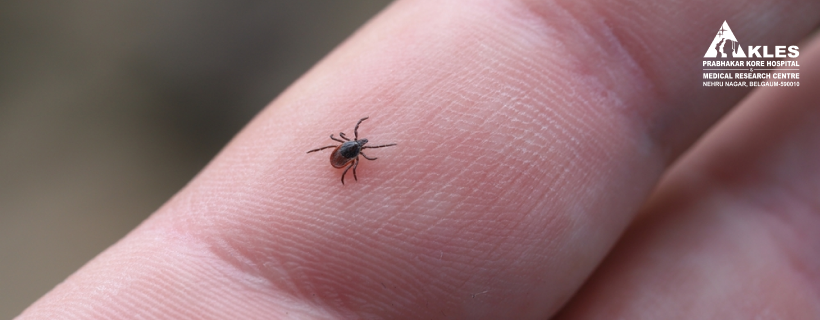

Medically Reviewed by Dr. Priyanka Patil, General Medicine
Written by KIE Editorial Contributors
3.5 min read | Last Updated: 09 August 2025 | Published On: 09 August 2023
Sudden fever and unusual rash are signs of scrub typhus. This bacterial infection, transmitted by tiny insects called chiggers, can become dangerous if left untreated. Knowing the early symptoms, the importance of proper diagnosis and the available therapy can help prevent complications and save lives. This guide explains how scrub typhus spreads, how to detect it, and what you can do to avoid it and stay safe.
Scrub typhus is an acute febrile illness caused by the bacterium Orientia tsutsugamushi. It is transmitted through the bite of infected larval mites known as chiggers. This infection is widespread in rural and forested regions of Asia and the Pacific.
One of the causes of scrub typhus is exposure to mite-infested vegetation, which makes outdoor workers and travellers more vulnerable. If left untreated, scrub typhus can become severe, leading to organ complications.
Typical scrub typhus symptoms appear 6–21 days after a chigger bite and can range from mild to severe. Common signs include:
In some cases, patients may also experience confusion, cough, or abdominal pain. Recognising these early signs is Crucial for timely scrub typhus diagnosis.
Scrub Typhus disease is caused by the bacteria Orientia tsutsugamushi, which is transmitted to humans via the bite of infected chigger larvae.
Key risk factors include:
Since not all bites are noticed, paying attention to early symptoms is essential for early intervention.
Accurate scrub typhus diagnosis is crucial for effective treatment. Doctors rely on:
Early testing is especially crucial in preventing severe outcomes, including complications that affect the heart, lungs, or brain.
The infection is mainly transmitted by scrub typhus, which is carried by larval mites (chiggers) that pick up the bacteria from small mammals, such as rodents.
Scrub typhus treatment is essential to avoid complications. The primary approach includes:
Most patients recover fully if treated within the first week of symptom onset.
Currently, there is no licensed vaccine for scrub typhus, so prevention relies on reducing exposure to chiggers. Key steps include:
By following these measures, the risk of infection can be significantly reduced.
Get in Touch with a Doctor
Reinfection is rare but possible if you are bitten by infected chiggers again in endemic areas because natural immunity is not always lifelong.
Symptoms usually develop 6–21 days after the bite of an infected chigger, with fever often being the first noticeable sign.
No, scrub typhus is not contagious between humans. It is only transmitted by scrub typhus, which is caused by infected chigger bites.
The presence of a dark scab, known as an eschar, at the site of a scrub typhus bite mark is a key diagnostic clue, although not all patients develop one.
Currently, there is no commercially available vaccine. Prevention relies on protective clothing, insect repellents, and avoiding high‑risk areas.
Yes, scrub typhus is a serious and potentially life-threatening condition if left untreated. It can lead to severe complications such as brain inflammation, pneumonia, or kidney failure.